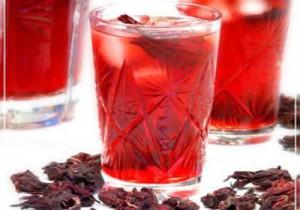Types of tea and their properties – which tea is the healthiest and tastiest?
Tea is the most common drink used by both adults and children. It is good for health, rejuvenates and helps to reduce weight. This great drink can be drunk hot to keep warm or cold to cool. Tea is classified into several types and varieties.
The content of the article:

Types of tea by color – black, green, white, red, Pu-erh
He is very famous all over the world. This tea can be with or without additives.
The peculiarity of black tea is that it undergoes complete oxidation. Oxidation tea can take two weeks, or even a month.
Dried leaves are brown or black in color.
When brewed, tea can be orange and dark red. Sometimes black tea has tart taste.
How is black tea consumed:
This wonderful tea can be consumed with sugar, without sugar, with a slice of lemon. You can also add low-fat cream or milk to black tea.
Unlike black tea, green tea does not undergo complete oxidation. Freshly plucked tea leaves are left in the open air to wilt slightly. Then they are dried and rolled into small lumps. Thanks to this method, there is no strong fermentation of the tea.
Why green tea is good for you:
Green tea is very healthy, it contains a lot of vitamin C, PP and group B. Green tea improves mood, kills bacteria, removes heavy metals (lead, mercury, zinc) from the body and even helps fight cancer.
How to brew green tea:
In order to brew green tea, you need to pour the tea leaves into a cup, pour boiled water over it. It is recommended that the water temperature does not exceed 90 degrees Celsius. You need to brew for no more than five minutes. The tea is yellowish-green in color with a pleasant smell and mild taste. Green tea is mostly consumed without sugar.
White tea undergoes even less fermentation than green tea. White tea is tea budsthat are covered with white pile.
Such tea is harvested in early spring, while people who are busy collecting tea are not allowed to consume onions, garlic and various spices before work, so as not to spoil the aroma of the leaves. After the young leaves have been collected, they are withered and dried – first in the sun, then in the shade. Then the leaves are put to dry in the oven. Then they are packed.
The peculiarity of this tea is that it does not curl.
Why is white tea useful?
White tea, like green tea, has beneficial vitamins. C, PP, B and many other useful substances. This tea is recommended for those people who have lowered immunity and suffer from chronic fatigue.
How to brew white tea:
White tea has a delicate and mild taste. It is better to choose porcelain dishes for making white tea. The water should be clean, fresh and not boiled. The water temperature should not exceed 85 degrees Celsius… For 150 ml of water, you need to take from 3 to 5 grams of leaves.
For red tea, the top leaves are harvested early in the morning. After the tea leaves are collected, they are dried, then they are laid out in boxes and fermented for 24 hours.
Why is red tea useful:
Like all types of tea, red tea is very beneficial for health – it enhances immunity, has a good general strengthening effect on the body. This drink contains a large amount of potassium. Tea is recommended for those people who have low blood pressure.
How to brew red tea:
To brew tea, you need to lightly boil the water – the temperature of the boiled water should not exceed 90 degrees Celsius…
Then pour water into the tea cup and drain immediately to remove the damp odor. After these actions again. fill a cup with boiling water and cover with a towel. To prevent the tea from losing its taste, pour the tea leaves through a strainer into another bowl.
After brewing, the tea acquires a dark red color and an unusual taste – sometimes it is even sweetish.
This drink came to us from Chinese provinces… Thanks to fermentation and storage characteristics, tea acquires an unusual taste and smell. The longer it has a shelf life, the tastier it becomes.
Tea is prepared using a complex technology. First, the leaves of a Chinese tea plant called “Camellia”.
Tea leaves must be treated with certain infusions. With the help of added special bacteria, the tea is fermented. But that’s not all. To make a real pu-erh, it is placed in special pits with infusion for several years, then pressed into round or rectangular cakes.
Why Pu-Erh tea is useful:
Puerh invigorates very well, so you can drink it instead of coffee. This tea not only improves performance, but also improves well-being, reduces high blood pressure, removes toxins. It is believed that pu-erh helps to remove extra pounds.
How to brew pu-erh tea:
First you need to choose the right dishes – glass, porcelain or clay. If you have chosen clay dishes, then always brew only one type of tea in it, as it strongly absorbs smells.
Take a plate of tea, separate a small piece from it – no more than three centimeters in size – and put it in the teapot.
For pu-erh, it is enough just to heat water, but not to boil, the temperature should not exceed 60 degrees Celsius… To brew tea for the first time, you need to wait everything 30 seconds, and the rest of the tea leaves can be drained immediately.
Pu-erh tea takes on a delicious red color and unique taste.
The best types of tea by countries – the largest producers
- India
India is a major global producer of black tea. There are many types of Indian teas and the assortment is very varied.
For example, in India, both orthodox leaf tea and strong granulated tea (CTC) are produced, which gives an unusual tart and strong taste. Also in India, green tea is produced with a mild taste and aroma. - China
An amazing country like China produces unusual teas with different flavors. China is the main exporter of green tea. It was here that the tea tradition first appeared, which the whole world later learned about. All types of Chinese tea are unique and varied. - Sri Lanka
Ceylon black teas are produced here, but mainly, as in India, “orthodox” loose tea and CTC granulated tea. Nowadays, the manufacturer supplies both black tea and green tea. - Taiwan
The tradition of growing tea came to Taiwan from China, but now this tea region is called independent. It produces unusual high-mountainous oolong tea with a pleasant taste and aroma, as well as black and green. - Japan
Japan is a large producer of green tea only, but its selection is varied. Japanese tea can differ in taste and aroma. - Kenya
Kenya is the largest exporter and producer of high quality black tea. But tea production in Kenya was started recently, at the beginning of the twentieth century. Thanks to good conditions, the raw materials are considered environmentally friendly. Thanks to the proper careful care of tea plantations, tea acquires a pleasant tart taste. - Indonesia
Indonesia is also considered to be the largest producer of black leaf tea, as well as granulated and green tea. The ideal climate in this country creates excellent conditions for growing good quality tea – and, thanks to this, the tea acquires a delicate taste.

Types of tea by type of tea leaf and its processing
Premium quality whole leaf tea
- Tip tea (T) – unblown tea buds.
- Pekoy – long tea (R) – the youngest leaves. Pekoe are collected leaves with villi on them.
- Orange (O) – Whole youngest curled leaves. Orange – this name comes from the dynasty of the princes of Orange. Holland in the sixteenth century was the largest supplier of tea, and the finest and highest quality teas went to the Stadthalter court.
- Orange pitch (OR) – Orange Pekoe cannot contain tea buds (tips). But nevertheless, orange pitch with the addition of kidneys is considered very good and is divided into categories:
- FOP (Flowery Orange Pekoe) – collected sheets with tips (the uppermost ones are collected closer to the buds)
- Gfop (Golden Flowery Orange Pekoe) – a lot of tips
- TGFOP (Tippy Golden Flowery Orange Pekoe) – contains more tips
- FTGFOP (Finest Tippy Golden Flowery Orange Pekoe) – very few tea leaves and many tips
- SFTGFOP (Super Fine Tippy Golden Flowery Orange Pekoe) – More tips than FTGFOP

Medium grade tea
Medium grade tea Is tea made from broken leaves. Sometimes these leaves can be simply crushed, or they can be waste in the tea making process. But tea in this version usually brews faster and acquires a rich tart taste.
In the classification of medium-grade tea, the letter B (broken) is added to the international quality marking:
- BP – broken pekoy
- BOP – Broken orange pitch. Broken orange pekoe categories:
- BFOP (Broken Flowery Orange Pekoe)
- BGFOP (Broken Golden Flowery Orange Pekoe)
- BTGFOP (Broken Tippy Golden Flowery Orange Pekoe)
- BFTGFOP (Broken Finest Tippy Golden Flowery Orange Pekoe)
- BFOPF – medium leaf tea, letter F – finely chopped tea
- BFTOP – loose leaf tea, which contains a high content of tips
- BOP1 – tea with long leaves
- BGOP – tea from the best leaves

Low-grade tea crushed
Shredded or broken tea Is waste from the production of various tea varieties or specially crushed tea leaves.
Classification of ground tea of inferior grade:
- Granulated tea (CTC) – the leaves after fermentation are placed in a machine that crushes and curls them. Granulated tea has a richer, stronger and more tart taste than other types.
- Tea bags – is obtained from dust obtained from the production of another type of tea. Crumbs or dust are placed in bags and packed. Tea bags brew very quickly, but tastes less intense. Tea can be black or green, and sometimes it is flavored.
- Brick tea – pressed tea. Most often, it is made from the oldest leaves. Brick tea comes in black and green. The outer material must be at least 25%, and the leaves must be 75%.
- Tiled tea – this tea is only black. It differs from brick tea in that it is made from tea crumbs. First, it is fried a little, then it is steamed at a temperature of 100 degrees Celsius.
Instant tea is a powder that does not need to be brewed. Tea just needs to be dissolved in water. It is convenient to take it both on the road and to work.

According to the degree of fermentation, tea is:
- Fermented tea – This is a black tea that undergoes full fermentation (oxidation rate up to 45%).
- Unfermented – tea that hardly undergoes oxidation (white and yellow). The oxidation state of tea reaches up to 12%.
- Semi-fermented – tea that undergoes incomplete oxidation. For example, it can be green tea (fermentation rate from 12% to 35%).
If you liked our article, and you have any thoughts about this, share with us! Your opinion is very important for us!
What to give a friend?
Gift Certificate! You can give it to your loved one or use it yourself.
And we also give away a certificate for 3000 rubles every month. among new email subscribers. Subscribe!
Select a certificate in the store
Visit Bologny for more useful and informative articles!




